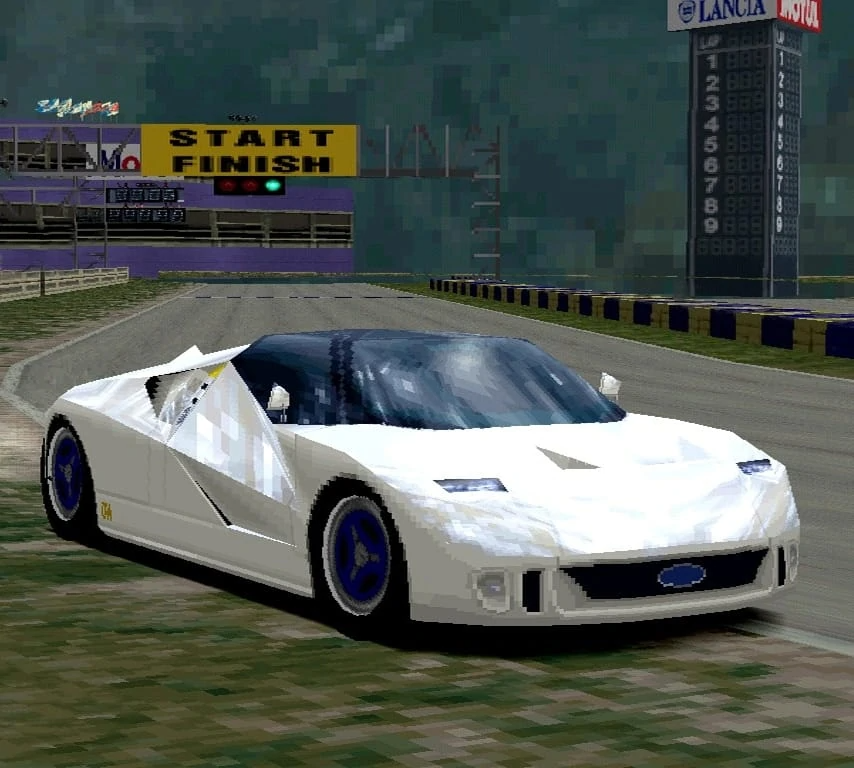The mid-90s were an exciting time for supercars as the Italian makes rolled out wedge car after wedge car and every television show and movie featured perfectly manicured men driving them. As the automotive mainstream went “boring is good” and “we all look alike because it’s aerodynamic,” high end models went flashy. Into this entered the Ford GT90, as much a combination of Ford in its “we own everything” heyday as it was a high performance concept.
The GT90 almost doesn’t qualify as a concept car, as it was originally designed to be a potential production model, but was nixed as such immediately upon its release. Ford engineers had high hopes for the car as a possible follow up to the very successful GT40 and GT70, but management saw it differently and the GT90 became a concept car almost immediately upon its unveiling.
The Ford GT90 would, however, be a source of inspiration and offer a few design cues for the now-legendary Ford GT that would come about ten years later.
Unveiled at the Detroit Auto Show in 1995, the GT90 vaguely resembled the GT40 it was to carry the torch for, but had little beyond a few design cues in common with that previous sports car. The GT90 heralded Ford’s “New Edge” design philosophy, which would (marketing-wise) pull Ford out of the aero-fueled and boring roundness of its lineup at the time.
1995 was a good year for unstoppable V6 powerplants, but a terrible year for anyone hoping to drive around in budget-conscious style. The Taurus sold in huge numbers, and was the police and rental car of choice, but caused near-accidents as onlookers fell asleep looking at it. Meanwhile, the Explorer, whose engine was similarly tank-like, suffered from an explodingly unreliable transmission and multiple lawsuits for rollover risk.
During this, however, the Ford GT90 was a welcome distraction for harried engineers. Pulling from the various ownership stakes Ford had at the time, including Jaguar, Aston Martin, and Mazda, the team designed the GT90 to compete with supercars like the Ferrari F355 and the Lamborghini Diablo. That all started with a huge 48-valve V12 engine with four turbochargers.
The 5.9-liter V12 was an aluminum masterpiece that produced 720 horsepower and 660 pound-feet of torque. Redlining at 6,300 rpm. Designed from the Ford Modular Engine Family, the engine was a 90-degree V design which basically took the existing 4.6L V8 and added four more cylinders. Bore was 90.2mm and stroke was 77.3mm as a single casting. A five-speed manual transmission developed by FF Developments and Ricardo ran all that V12 power to the rear wheels.
All of that engine power came at a huge cost in heat. To counter that and keep the car from starting on fire from the torch-like exhaust, ceramic tiles surrounded the exhaust lines so that the body panels would not melt. A double wishbone suspension and power-assisted rack and pinion were derived from Jaguar and Mazda to hold the car steady and tight while ventilated disc brakes provided stopping power.
Ford claimed that the GT90 was capable of going from 0-60 mph in 3.1 seconds, to 100 mph in 6.2, and to finish a quarter mile in 10.9 seconds (at 140 mph). Top speed was said to be 253 mph. The GT90 was never fully tested, however, and those numbers are assumed to be theoretical as the car’s concept status meant it was never put into competition or run on a public track for official testing.
Most of the Ford GT90’s development happened over a short six month period in which a small engineering team quietly pulled from Ford’s various resources to design it. The transmission was derived from a design used in the Jaguar XJ22 and the engine was tested on a Lincoln Town Car test mule.
For a short amount of time, the GT90 was considered a production prototype and it appeared in an issue of Top Gear, having been tested by Jeremy Clarkson before its unveiling. Shortly after the covers were pulled off and the car was debuted, however, Ford management announced that the GT90 was a prototype only and would not be produced. That made it a concept car. It made appearances at various car shows and events in 1995 before being relegated to museum status.
The Ford GT90 has appeared in several video games including Need for Speed II, Sega GT 2002/Sega Online, Gran Turismo 2, Ford Street Racing, and many others. The GT90 currently resides in the Hajek Motorsports Museum in Oklahoma. It occasionally appears in car shows and Concours events around the U.S.











